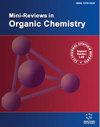Occurrence, Isolation, Pharmacological Potential, Metabolism, and Toxicity of Myristicin: A Naturally Occurring Alkoxy-Substituted Allylbenzene
IF 1.9
4区 化学
Q2 CHEMISTRY, ORGANIC
引用次数: 0
Abstract
Natural products are secondary metabolites obtained from plants, animals, and microorganisms with diverse chemical structures resulting in diverse biological functions and drug-like properties. This review article summarizes in detail the occurrence, detection, isolation, various pharmacological properties, metabolism, and toxicity of a natural compound i.e., 5-Allyl-1-methoxy-2,3-methylenedioxybenzene commonly known as Myristicin. A relevant literature search was made using the keywords essential oil, mace, myristicin, nutmeg, and pharmacological activities from different databases such as Pub Med, Sci finder, Science Direct, and Google Scholar. The literature search results presented articles from 1963 to 2022. Thereafter, the articles were carefully screened and selected for review. Myristicin, an alkoxy-substituted allylbenzene is present in major to minor amounts in the essential oils obtained from different plant parts and exhibits various pharmacological properties such as antimicrobial, antioxidant, antiproliferative, anti-inflammatory, insecticidal, and hepatoprotective. It forms 10 metabolites by reduction, demethylation, hydroxylation, ring formation, ring-opening, and conjugate formation. In the liver, myristicin has been metabolized by Cytochrome P450 complex enzymes to generate active metabolite (1ˈ hyroxymyristicin) responsible for cytotoxic, genotoxic and apoptotic effects (150 µM). But, myristicin at 600 µM does not produce enough 1ʼ-hydroxymyristicin to give the final toxicant. Myristicin poses no major risk to human health through the consumption of herbs and spices due to its presence in low amounts. It has great potential to be used in the traditional system of medicine. We hope that this review will provide complete knowledge about myristicin on a single platform.天然存在的烷氧基取代烯丙基苯肉豆蔻素的产生、分离、药理潜力、代谢和毒性
天然产物是从植物、动物和微生物中获得的次生代谢物,具有不同的化学结构,具有不同的生物功能和药物样特性。本文对天然化合物5-烯丙基-1-甲氧基-2,3-亚甲基二氧苯(俗称肉豆酱素)的发生、检测、分离、各种药理性质、代谢和毒性等方面进行了综述。在Pub Med、Sci finder、Science Direct、谷歌Scholar等数据库中检索精油、豆蔻、肉豆蔻素、肉豆蔻、肉豆蔻药理活性等关键词进行相关文献检索。文献检索结果显示了1963年至2022年的文章。此后,这些文章经过仔细筛选和挑选供审查。肉豆蔻素是一种烷氧基取代的烯丙苯,在从不同植物部位获得的精油中大量或少量存在,并表现出各种药理特性,如抗菌、抗氧化、抗增殖、抗炎、杀虫和保护肝脏。它通过还原、去甲基化、羟基化、成环、开环和共轭形成10种代谢物。在肝脏中,myristicin被细胞色素P450复合物酶代谢产生活性代谢物(1 . hyroxymyristicin),负责细胞毒性、基因毒性和凋亡作用(150µM)。但是,600µM下的肉豆蔻素不能产生足够的1′-羟基肉豆蔻素来产生最终的毒物。肉豆蔻素由于含量低,通过食用草药和香料不会对人体健康构成重大风险。它在传统医学体系中具有很大的应用潜力。我们希望这篇综述将在单一平台上提供关于myristicin的完整知识。
本文章由计算机程序翻译,如有差异,请以英文原文为准。
求助全文
约1分钟内获得全文
求助全文
来源期刊
CiteScore
4.50
自引率
4.30%
发文量
116
审稿时长
>12 weeks
期刊介绍:
Mini-Reviews in Organic Chemistry is a peer reviewed journal which publishes original reviews on all areas of organic chemistry including organic synthesis, bioorganic and medicinal chemistry, natural product chemistry, molecular recognition, and physical organic chemistry. The emphasis will be on publishing quality papers very rapidly, without any charges.
The journal encourages submission of reviews on emerging fields of organic chemistry including:
Bioorganic Chemistry
Carbohydrate Chemistry
Chemical Biology
Chemical Process Research
Computational Organic Chemistry
Development of Synthetic Methodologies
Functional Organic Materials
Heterocyclic Chemistry
Macromolecular Chemistry
Natural Products Isolation And Synthesis
New Synthetic Methodology
Organic Reactions
Organocatalysis
Organometallic Chemistry
Theoretical Organic Chemistry
Polymer Chemistry
Stereochemistry
Structural Investigations
Supramolecular Chemistry

 求助内容:
求助内容: 应助结果提醒方式:
应助结果提醒方式:


